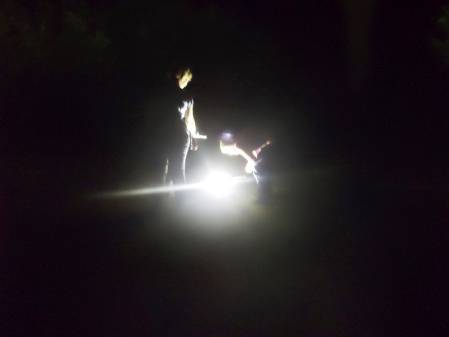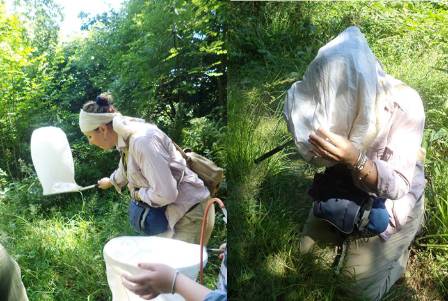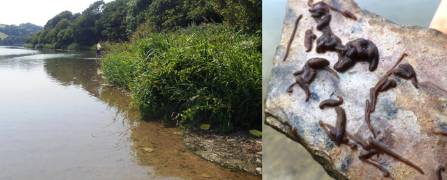A team of Museum scientists and volunteers visited Slapton Ley Nature Reserve between 21-25 July to sample invertebrates from a variety of habitats. Rachel Clark writes about their second day in the field, including the range of traps they use to collect insects.
For the last two nights we have been putting out Ryan’s light trap. The trap runs all night and collects invertebrates such as moths, flies, beetles and wasps, which are especially attracted to the bright light - with a high ultraviolet component it is much more powerful than a household light bulb.
You can pooter specimens from around the trap while it is on, but you can also leave the insects in the trap overnight and take a look in the morning.
Ryan and Thomas looking at what is flying around the light trap.
During our moth-trapping we collected a range of species, including Poplar and elephant hawk-moths, rosy footman, buff-tip, common footman, drinker moth and magpie moth... to name a few.
Left to right; buff-tip, rosy footman and poplar hawk-moth which were found in the light trap.
We also used a method known as sweeping, which as the name suggests is sweeping a net in a figure-of-eight through vegetation. The net catches the invertebrates and they can then be pootered out of the net bag.
Left: Jan teaching us how to use a sweep net. Right: Jan demonstrating how to pooter/aspirate effectively.
Jan provided an excellent demonstration for all of us on our first day of sampling; we are all now brilliant at sweeping in a figure-of-eight!
Later on some of us went to great lengths to collect some samples, including taking a paddle in the lake, which contains leeches!
Left: some adventurous collectors searching the reeds for specimens. Right: a mass of leeches found under a rock (as well as on our skin).
With that I will leave you with a beautiful scenic picture from the Ley!
Thank you for reading.
Rachel
Taken at the lake as the day draws in.







